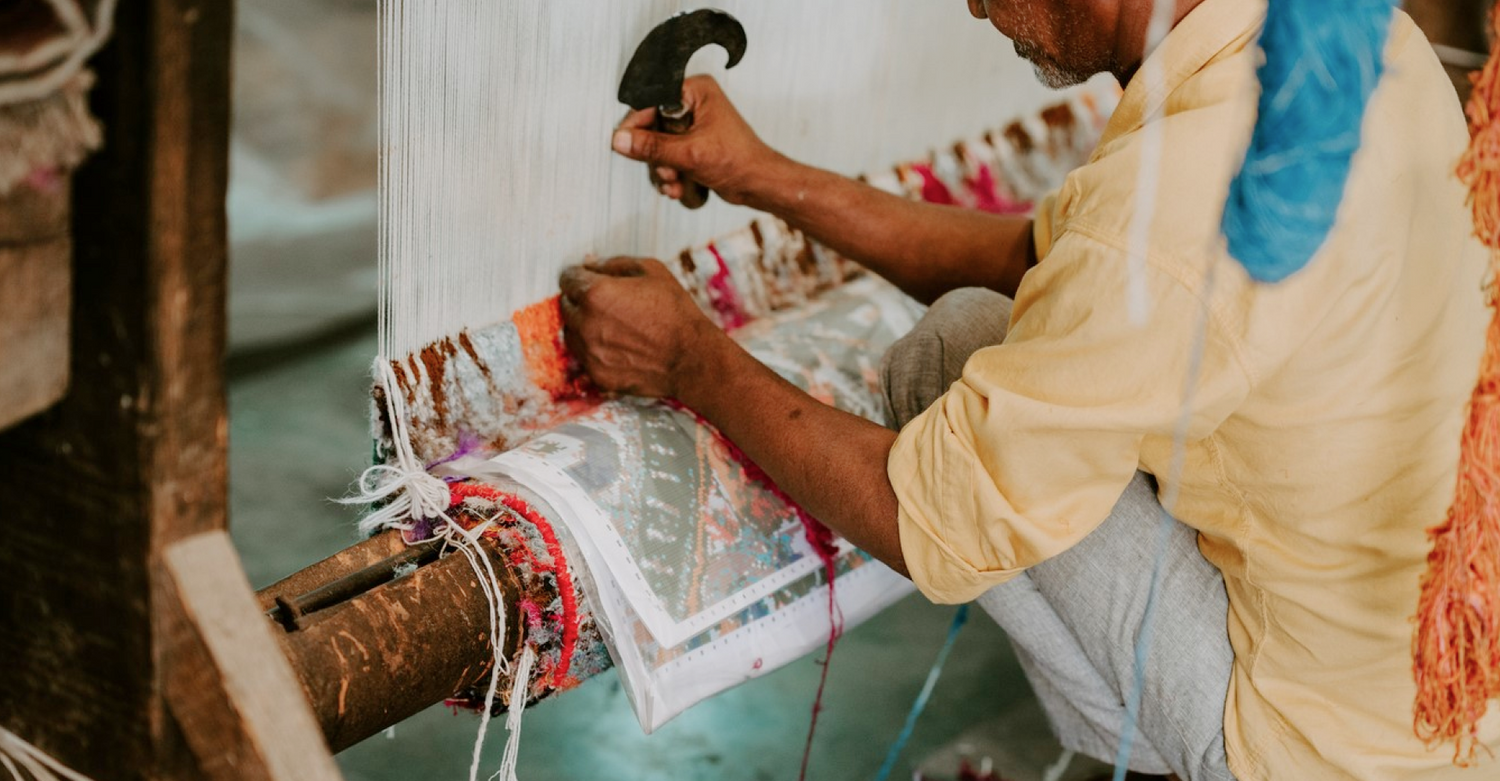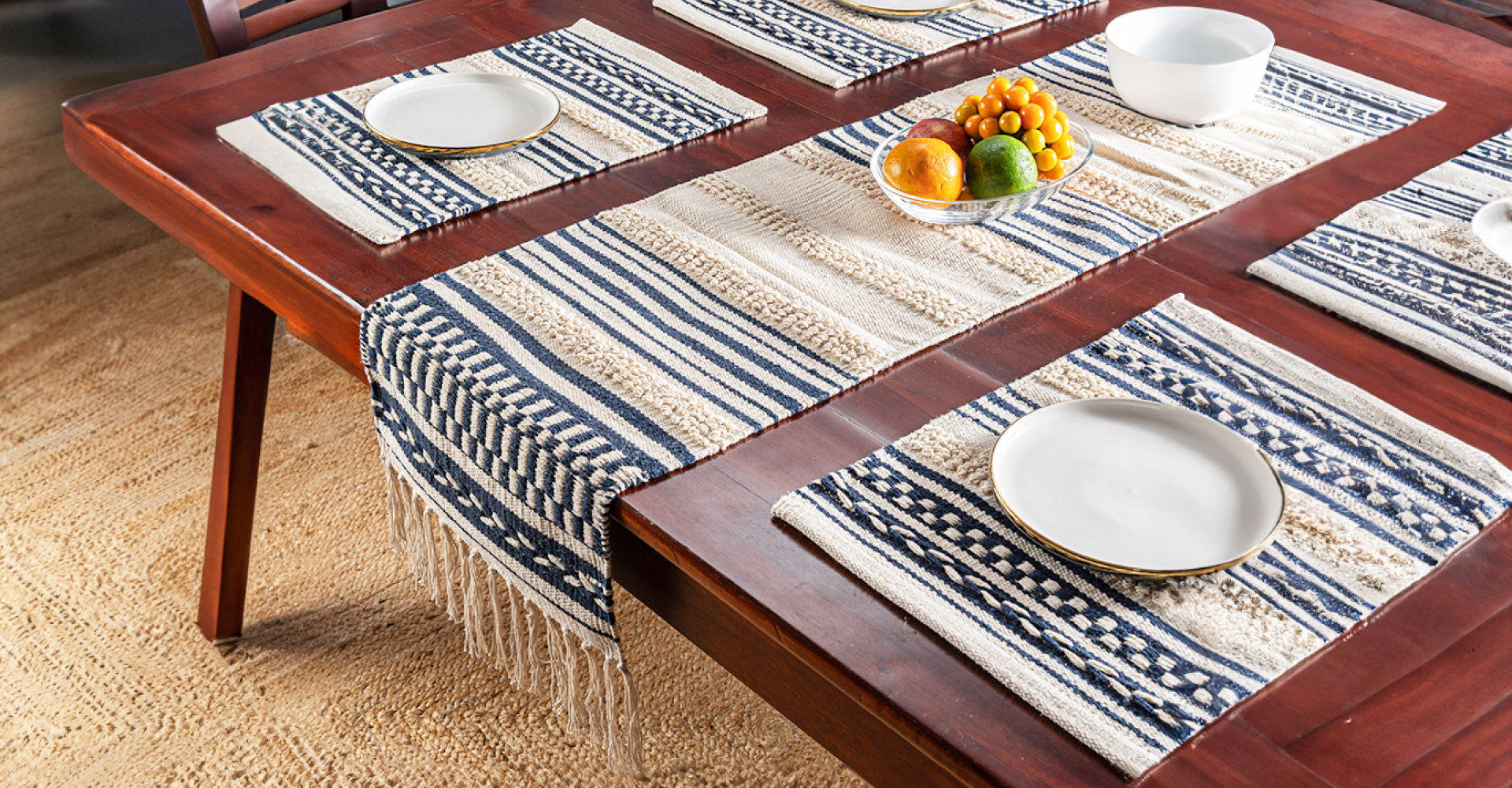Indian rug weaving is a beautiful tradition that’s been handed down through generations. It’s more than just making rugs – it’s about keeping a rich history alive. These stunning creations don’t just decorate homes; they tell stories and showcase craftsmanship that’s stood the test of time.
Woven Through Time: India’s Living Legacy
The history of handloom in India dates back to the Indus Valley Civilization, reflecting the country's rich cultural heritage. Early handlooms, made of wood and bamboo, enabled self-reliant cloth production using the spinning wheel (Charkha) to spin cotton, wool, or silk, with Indian fabrics exported to Rome, Egypt, and China. The British colonial period devastated the handloom industry by exporting raw materials and flooding India with machine-made textiles. Post-independence, the Swadeshi Movement and the Textile Policy of 1985 aimed to revive handloom. Today, digital media and e-commerce have helped popularize handloom, with influencers making it trendy again. Regions like Panipat, Jaipur, and Bhadohi remain major hubs for weaving in India, keeping the tradition alive.

Hands That Weave, Hearts That Remember
Indian handwoven, hand braided, and hand-tufted rugs embody a legacy of craftsmanship that has been honed over centuries. Skilled artisans, often working in family traditions, meticulously create these rugs using time-honored techniques. Handwoven rugs are crafted on traditional looms, with each knot and weave carefully executed to ensure durability and intricate design. Hand Braided rugs, made by intertwining natural fibers like jute, cotton, and wool, showcase organic textures and rustic charm. Hand-tufted rugs, crafted using a handheld tufting tool, allow for detailed patterns and plush comfort. These techniques, deeply rooted in India’s rich textile heritage, continue to thrive, blending artistry with functionality in every piece.

A Map in Textures: Regional Inspirations in Indian Rugs
Jaipur – Known for hand-knotted wool and silk rugs with Persian and Mughal designs, plus block-printed dhurries.
Bhadohi – India's "Carpet City," famous for hand-knotted wool carpets and Persian-style rugs.
Kashmir – Renowned for luxurious hand-knotted silk carpets with intricate floral and paisley patterns.
Panipat– A major hub for handwoven and hand-tufted wool and cotton rugs, plus affordable dhurries.
Each region offers not just a product—but a point of view. A cultural fingerprint, felt underfoot.
Sustainability in Indian Rug Weaving
Creating rugs through weaving, tufting, and braiding with natural materials like cotton, jute, and wool is a sustainable choice that benefits both artisans and the planet. Unlike machine-made rugs, these handmade pieces use renewable, biodegradable fibers with minimal environmental impact. Traditional methods reduce carbon footprints, avoid harmful chemicals, and ensure lasting quality, promoting less waste. By choosing handmade, natural fiber rugs, we support ethical craftsmanship and embrace a more sustainable way of living.

Tradition That Lives On
Far from being a dying art, handwoven rugs continue to thrive, cherished for their craftsmanship, authenticity, and timeless appeal. In a world of mass production, they stand as a testament to slow design and artistry, each piece carrying the story of its maker. As more people embrace sustainable and meaningful decor, the tradition of weaving not only endures but flourishes, bringing warmth and character to homes for generations to come.
At TROOST, we carry this legacy forward—not by replicating the past, but by honoring it through design, blending classic techniques with contemporary design. Each TROOST rug is thoughtfully made to bring heritage into modern living—soft underfoot, rich in story, and timeless in spirit.
Because a tradition this meaningful deserves to be lived with, every single day.



Leave a comment
This site is protected by hCaptcha and the hCaptcha Privacy Policy and Terms of Service apply.